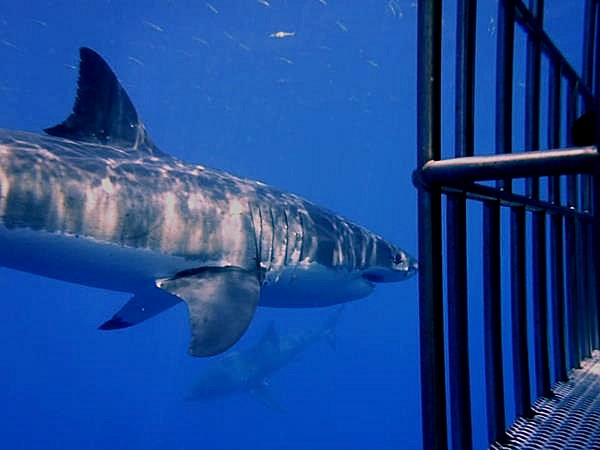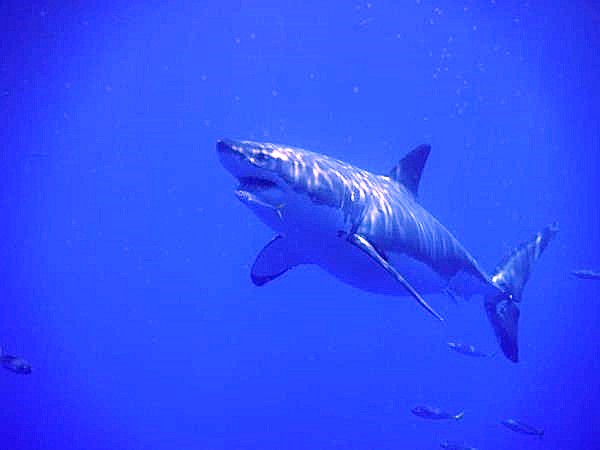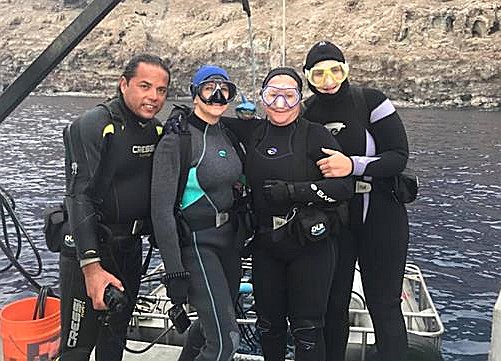![]()
- End-of-Season Picnic & Beach Dive
- Tahiti 2019
- Great White Shark Cage Diving
- Goliath Grouper Aggregation Dive
- 2019 Woman's Divers Hall of Fame Scholarship and Training Grants
- Giant Boom Goes to Clean Pacific's Plastic Trash
- Shark Varieties: Know Your Sharks
- Fun Shark Facts
- Plastics Problem Solved?
- Beach Minerals
- New Shark Species
- Newsletter Delivery Options
- Email or Address Change?
- T-Shirts For Sale
- Active Divers Guidelines & Policies
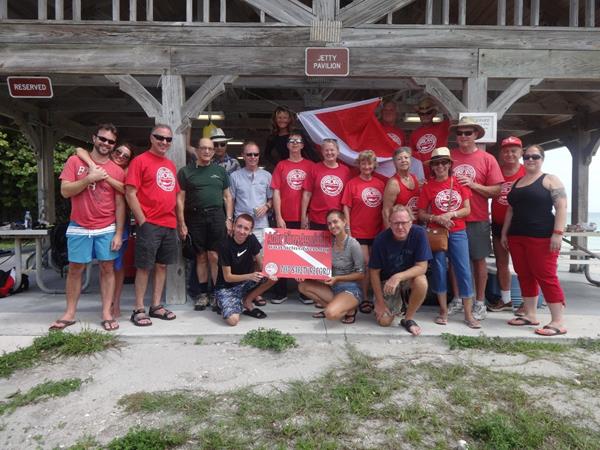
When: Saturday, October 6, 2018
Who: Active Divers members, family and friends. The cost of the BBQ for non Active Divers members is $10.00.
Where: Dr. Von D. Mizell-Eula Johnson State Park (formerly known as John U. Lloyd Beach State Park), Jetty Pavilion, 6503 N. Ocean Drive, Dania Beach, Florida 33004. 1.5 miles north of Sheridan St. on A1A. It dead ends into the park. Signs are posted with directions.
Time: Park opens at 8:00 AM. Meet for beach dive at 9:00 AM, BBQ at noon.
MUST BE PRESENT TO WIN RAFFLE PRIZES. MUST RSVP TO WIN PRIZES.
Bring Your Dive gear for Sale or Swap!!
Call or email Lon at 305-251-4975 or lon@diverlon.com to sign up, deadline October 3 RSVP.
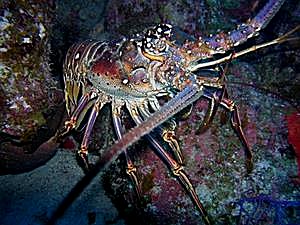 For beach diving, bring all your own gear and a dive
flag if you have one. The ledge is about 100 yards off shore. It’s a
great surface swim out. That is your warning. Or dive in close and
enjoy the reef (rocks, seaweed and telecommunication cables). The
pavilion has covered shelter, nice bathrooms, showers, and changing
room. We will have the BBQ and raffle, rain or shine. If there is a
hurricane it may be cancelled. But maybe not because that is when the
lobsters are walking. BBQ will include lobsters (if you catch any),
burgers, dogs, chicken, extras and all drinks. A small fee is charged
to enter the park ($4 for single occupancy vehicles, $6 for 2-8
persons per vehicle), parking at the pavilion. Non-Active Divers
members and non-family members may attend, but there will be a cost of
$10.00 for non- Active Divers persons. They may also dive, but are not
part of the Active Divers dive group and not eligible for prizes.
For beach diving, bring all your own gear and a dive
flag if you have one. The ledge is about 100 yards off shore. It’s a
great surface swim out. That is your warning. Or dive in close and
enjoy the reef (rocks, seaweed and telecommunication cables). The
pavilion has covered shelter, nice bathrooms, showers, and changing
room. We will have the BBQ and raffle, rain or shine. If there is a
hurricane it may be cancelled. But maybe not because that is when the
lobsters are walking. BBQ will include lobsters (if you catch any),
burgers, dogs, chicken, extras and all drinks. A small fee is charged
to enter the park ($4 for single occupancy vehicles, $6 for 2-8
persons per vehicle), parking at the pavilion. Non-Active Divers
members and non-family members may attend, but there will be a cost of
$10.00 for non- Active Divers persons. They may also dive, but are not
part of the Active Divers dive group and not eligible for prizes.
![]()

A few months ago the club newsletter printed an article to see what interest there was in a French Polynesia trip to Tahiti and Bora Bora and we got an excellent response! Tahiti is a long way from the US and the flights are not cheap, so I set about building an adventure/dive trip that could be enjoyed by many people with a variety of interests. The broad outline of the trip is as follows:
- Three day stay in Moorea from May 29 to June 1, 2019
- Seven day cruise on the Paul Gauguin from June 1 to June 8, 2019
- Land based dive trip from June 8 to June 17, 2019
The Pre-Cruise Trip

To put things in perspective let’s take a look at the cruise ship itinerary map below:
![]()
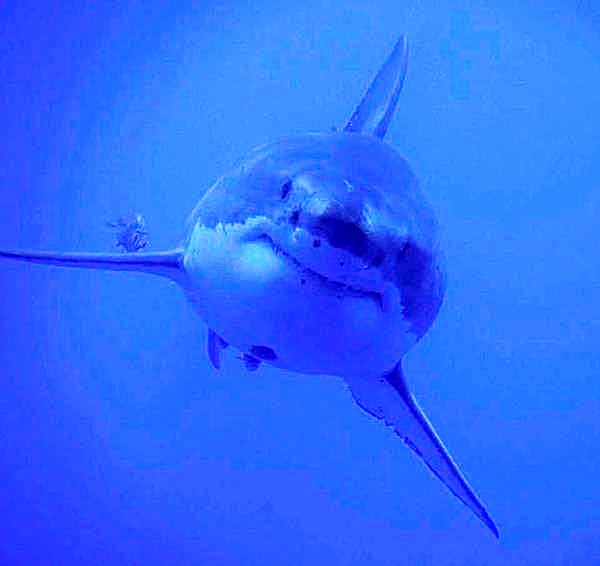 My fascination to
go cage diving with great white sharks started 20 years ago when I was
on a liveaboard in the Sea of Cortez. The dive masters on the boat were
raving about the trip they had just returned from to South Africa and
their cage diving experience. After hearing their stories, I knew I just
had to do it. Five years ago I had the opportunity to go to Africa and
made a trip down to South Africa to fill my bucket list once and for
all! Lo and behold, the three days I was in South Africa, there were 27’
swells and all boats were cancelled. It was such a disappointment that I
vowed not to give up on my dream. I did my research and discovered that
Liveaboards to Guadalupe Island, Mexico actually offer the best cage
diving experience with the best weather conditions imaginable.
My fascination to
go cage diving with great white sharks started 20 years ago when I was
on a liveaboard in the Sea of Cortez. The dive masters on the boat were
raving about the trip they had just returned from to South Africa and
their cage diving experience. After hearing their stories, I knew I just
had to do it. Five years ago I had the opportunity to go to Africa and
made a trip down to South Africa to fill my bucket list once and for
all! Lo and behold, the three days I was in South Africa, there were 27’
swells and all boats were cancelled. It was such a disappointment that I
vowed not to give up on my dream. I did my research and discovered that
Liveaboards to Guadalupe Island, Mexico actually offer the best cage
diving experience with the best weather conditions imaginable.
I started planning the optimal time of year to go and recruiting
anyone who was brave enough to go on what most think is a
life-threatening trip. I was able to convince fellow Active Divers
Jennifer White and Lisa Littleton to commit to the expedition. We
began making plans and picked the Nautilus Belle Amie for our trip in
mid-late August which would give us the opportunity to see male and
female sharks at the same time. We made our travel arrangements, paid
our deposits and awaited our trip of a lifetime. 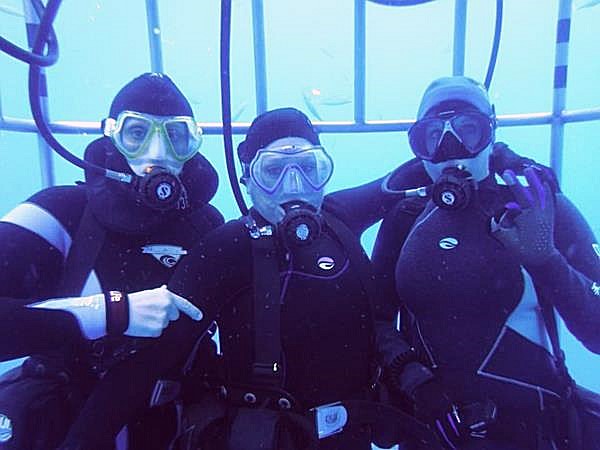
Our trip started in San Diego at the host hotel where the Nautilus representatives got us all checked in and ready for the bus, the “Shark Express”, to pick us up for our journey to Ensenada, Mexico to board the boat for the 260 mile, 20 hour voyage to Guadalupe Island. During the two hour drive to Ensenada, it was only fitting that they played the original JAWS movie on the bus for us. We crossed the border and arrived in Ensenada about 10 pm, where we were greeted by the crew and boarded the boat. We had a welcome glass of champagne with some snacks and got settled into our cabins for the night, ready for the crossing to meet the Great Whites!
The day at sea was filled with lots of eating, meeting our fellow divers and crew, relaxing, our muster drill, an introduction to sharks, and cage diving 101 presented by the crew. We arrived in Guadalupe in the early evening and dropped anchor a couple hundred yards from the island in 250 feet of water, where we would stay for the next three days of unlimited cage diving up close and personal with these magnificent creatures.
![]()
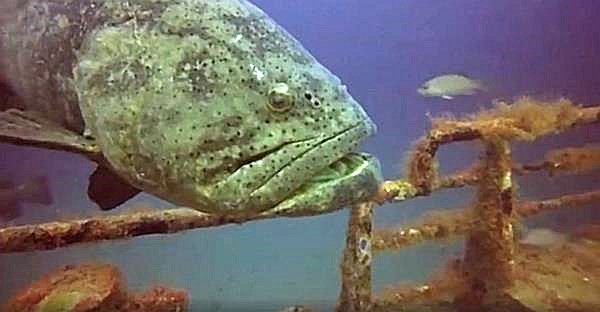 Every year the
annual Goliath Grouper aggregation occurs in the waters off West Palm
Beach between the months of August to October. They gather in a
spawning ritual around certain wrecks in the area. On September 22nd I
conducted a training dive for Divemaster candidate Juliana Bach, and
Advanced Open Water students David and Lori Woeltjen. We dove the
Mizpah and Ana Cecilia wrecks, and the aggregation around the Goliath
Groupers on the Ana Cecilia wreck was nothing short of spectacular.
The groupers are gentle, docile creatures who are unafraid of divers
and allow for a close approach and observation. The opportunity to
observe these gentle giants in their natural habitat was truly
remarkable.
Every year the
annual Goliath Grouper aggregation occurs in the waters off West Palm
Beach between the months of August to October. They gather in a
spawning ritual around certain wrecks in the area. On September 22nd I
conducted a training dive for Divemaster candidate Juliana Bach, and
Advanced Open Water students David and Lori Woeltjen. We dove the
Mizpah and Ana Cecilia wrecks, and the aggregation around the Goliath
Groupers on the Ana Cecilia wreck was nothing short of spectacular.
The groupers are gentle, docile creatures who are unafraid of divers
and allow for a close approach and observation. The opportunity to
observe these gentle giants in their natural habitat was truly
remarkable.
Goliath groupers are the largest predatory, reef-dwelling fish
species in the Florida, growing up to 8 feet long and weighing as much
as 600 pounds when full grown. Fishermen hunted them to such extremes
that the species was near extinction along the Florida coastline by
the 1990s. Then the government stepped in to grant them protective
status. The modern-day aggregations off the Florida coast are a
positive indication for the species. It is imperative, however, that
divers continue to advocate for their protection, as allowing
fisherman to take them has again come into question.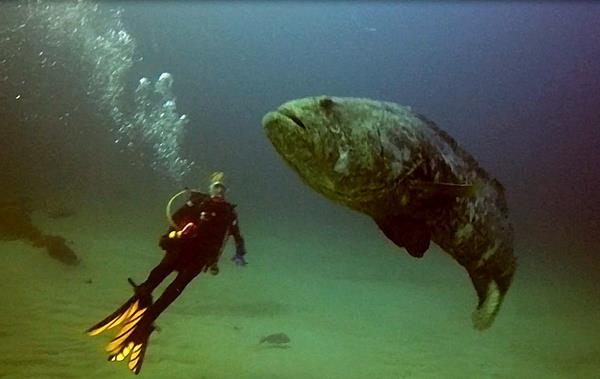
We booked the morning dive at Walker's Dive Charters out of Riviera Beach Marina, a truly excellent dive operation. They provided a guide in the water on both dives, and conducted a thorough dive briefing, complete with whiteboard drawings. Their divemasters were extremely professional, and the boat was clean and modern. The operation was very efficient and well-run. This was an extraordinary experience, and I hope we can add this dive and charter to the future ADA schedule.
To experience the Goliath Grouper aggregation dive first hand, check out my video compiled from footage taken on that day: https://youtu.be/NUt6d8pn224
![]()
Applications are live on the website at www.wdhof.org. This year they are offering 13 scholarships and 17 training grants. Please take a minute to review the list of opportunities with this year's offerings. I urge our youth divers to apply.
Click here to see a PDF flyer listing the available programs.
Applications are due October 31.
![]()
Let’s start with the biggest: Megalodon, which means "Big Tooth". It is 45 to 60 feet in length and weighs up to 100 tons, the tooth is seven inches long and the mouth is 6 feet wide. What? You say you haven’t heard of this monster? That is because it went extinc about 2.6 million years ago. The biggest current living shark is the Whale shark, 32 to 55 feet, a slow-moving creature and is the largest fish species alive.
Next on the hit parade is the Great White, we are all familiar with "Jaws". It ranges approximately 15 to 20 feet long and lives in coastal surface walso big at 16 to 21 feet long, lives in the Artic. Maybe that is why it is not so famous. This is followed by the Great Hammerhead at 15 to 20 feet in length and we can see them in our local waters, or at least that’s what I am told. They pin their prey down and then eat them, usually Rays.
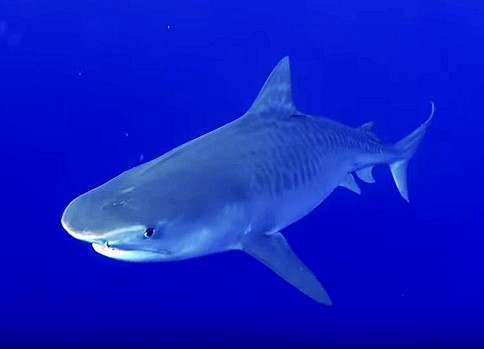
Tiger Shark
Up next is the Tiger Shark, measuring 14 to 18 feet, and named after their black stripes. This is followed by the Bluenose Six Gill, I guess you know why that is so named (hint: it has six gills in either side). The Oceanic Whitetip comes in at 9 to 13 feet. Again, the name is obvious. These are in a severe decline. Last up for this article is the Japanese sawshark, you guessed it, named after the saw nose, it is 3 to 5 feet in length.
Well that’s it for the top ones. But since those five shark species are the tip of the dorsal fin,we have a few (490) to go. Look for them in continuing articles.
![]()
A shark will go 6 weeks without eating. Recall that? However, when sharks do go into their eating phase, watch out! Sharks attack to feed, but recall they aren’t hungry very often, so that shark that is constantly on the prowl for food is FALSE. Shark brains? NO, more like bird brains, that is about their size. You would think with all that evolving time, 23 million years plus, their brains would have increased in size, but bird brains didn’t either, so go figure.
They have poor eyesight, much like me. But have great night vision, unlike me. The shark’s pupil is dilated all the time, giving it that dead eye bad boy look. I presume we carry that over from our impression of when a human is mad. It probably is a total misconception, in fact I’m sure of it.
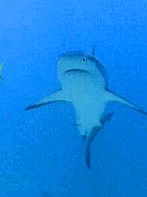 Here is what to
watch out for when approached by a shark. A shark rolling on its
side as it approaches you. That is a sure sign of an attack, right?
NOPE! It approaches from an angle (fighting position), plants its
pointed teeth into the flesh, then brings in the upper jaw forward
to cut it. That has to hurt.
Here is what to
watch out for when approached by a shark. A shark rolling on its
side as it approaches you. That is a sure sign of an attack, right?
NOPE! It approaches from an angle (fighting position), plants its
pointed teeth into the flesh, then brings in the upper jaw forward
to cut it. That has to hurt.
OK, how about sharks not eating dead bodies? Totally wrong, according to the scientists that study shark behavior. They are scavengers and opportunistic eaters, and enjoy rotting carcasses as much as live ones. Those scientists can determine anything, or just follow good logic, like finding a guy’s hand in a shark’s stomach that had committed suicide 10 days previously. Great detective work, right? NO!
![]()
An island of trash twice the size of Texas has collected by ocean currents between California and Hawaii. Engineers will use a 2,000-foot long boom to trap some 1.8 trillion pieces of plastic that scientists estimate are swirling in currents. Fitted with solar power lights, cameras, sensors and satellite antennas, the cleanup system will communicate its position at all times, allowing a support vessel to fish out the plastic every few months. Researchers found plastic going back to the 1960s and 70s. Many plastics take hundreds of years to decompose, others even longer, if ever.
So, Active Divers reminds our members of these three ways to practice good stewardship:
- REDUCE the amount of plastics you buy and discard, and reduce the amount of resources, gas, electricity, water, you consume.
- REUSE the plastics you do buy. Plastic water bottles can be repurposed for many other uses.
- RECYCLE all plastic, glass, paper, and others your community will accept in their recycle program.
Read the entire article at CNBC.
We all know that plastics are a major concern of pollution in the planet, let alone the oceans. They are widely used and take a long time to disintegrate. Plastics in all their forms are the main pollutant in the oceans. So, what has happened? The Japanese have discovered a way to increase the rate of disintegration exponentially.
This was first discovered by accident in a Japanese dump. The scientists were doing their regular thing when they discovered a bacterium that was eating PET (polyethylene terephthalate) plastic at a pretty rapid rate. Then by accident, they tweaked the enzyme in an effort to see how it evolved. The tweak actually improved the molecule, so that it was eating the plastic quicker than ever.
It breaks down plastic in DAYS, not years. 480 billion plastic bottles were sold in 2016 alone. Now we can get rid of them in days. This will change the way refuse is handled. Of course, there is still the collection process but that is being solved also as evidenced by the article above, "Giant Boom Goes to Clean Pacific's Plastic Trash. There are various machines being produced to let the currents push the plastics into designated areas for easier collection. It isn’t ALL bad.
![]()
It was discovered by the “Shark Lady” aka Eugenie Clark. She is also the first lady in the male dominated field of marine biology. However, we do have some up and comers, including right here in the club. I hope you have read her articles and how she is involved, kudos to Ms. Juliana Bach.
Clark founded the Mote Marine laboratory and was involved with it until her death in 2015 at the age of 92. This new species is named squalus clarkae, aka Genie’s Dogfish.
This research came out unexpectedly as they were researching overfishing and shark management. This is how they came across this shark. At first, they believed it was an existing species. Then through genetic testing, they discovered it was a whole new species. You never know where that investigation will take you. I was thinking about doing my own DNA, but now I’m not so sure.
Clark was an interesting person. She was one of the first to study sharks. She continued her work her whole life and made a mark for herself in a field that women were not involved in. I’m sure Juliana will be the same. Talk with her and you too will be convinced.
![]()
Want your newsletter delivered via snail-mail? Contact the webmaster and request a printed copy. Be sure to put "Active Divers Newsletter" in the subject.
Active Divers T-Shirts For Sale
Show your pride in the best dive club anywhere! Sizes small, medium, large, xlarge, xxlarge. Some tank tops available also. All shirts are $10 each. CALL LON AT 305-251-4975 AND PLACE YOUR ORDER TODAY!. Lon will deliver it to you on your next dive
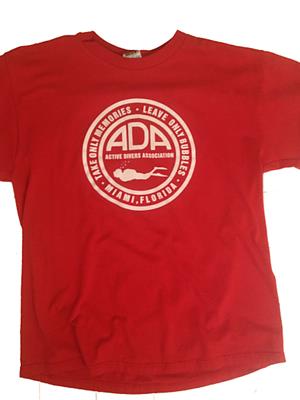
![]()
If so, please email or call us with your current information. You may send an email to: Dr. Dan Baeza, Membership Chair at ActiveDiversInfo@gmail.com. You can also call Dan at 954-260-8225 and leave a message with your new contact information.
Didn’t Jerry just write about this? No, that was beach sand, this is minerals. Hey, when you have to write an article a month you have to be very discriminating. Now the difference is minerals are the natural, non-living, solid parts of the beach. So with that bit of information clearing things up, you are ahead of most divers, but you knew that from being in Active Divers Association.
Most of the beach consists of minerals. It mostly quartz and various forms of calcium carbonate that make up the limestone. Also, some animal parts become minerals and form rocks. This is the natural state of the beach, which is changing constantly, especially in winter when storms hit and take much of the sand away, leaving the hard minerals (rocks). These minerals also reveal the geological history of the beach. Not that I care so much about the migration of sand, but it is interesting. I myself would prefer the sand to stay in place, but the weather has a different take on that.
We can look back thousands of years by analyzing the beach properties, no, not the houses, but those minerals. It reveals how the beach was formed and where the materials came from. But I just want to have that soft smooth sand underneath my feet so I won’t be tripping on those rocks and falling on my face. I not only look old but then feel even older when I injure myself on beach materials. I mean minerals (rocks).
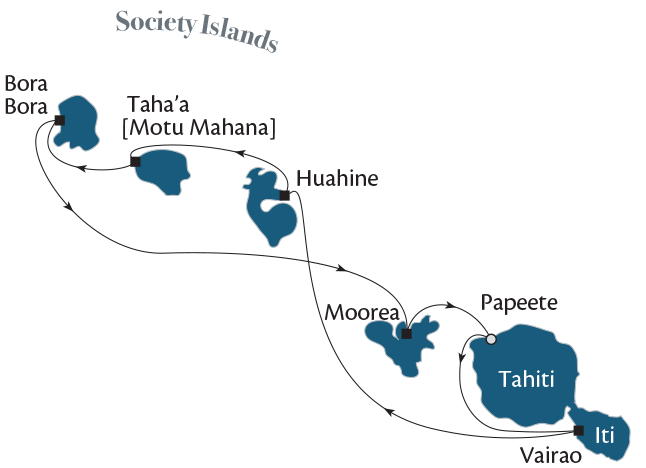
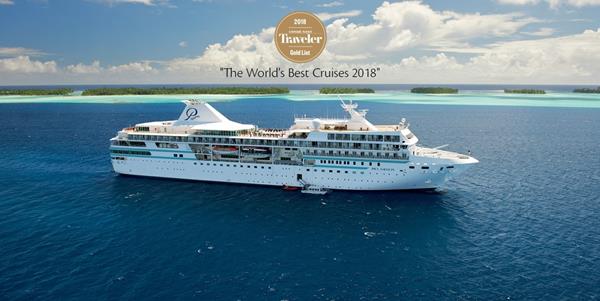 The cruise goes
to 5 separate islands and includes an overnight stay in Bora Bora.
Water sports, including scuba diving (booked separately) are
available on the cruise as it stops in ports in the Society Islands
and Tahiti Iti. One of the great things about a Paul Gauguin cruise
is that many things are included in the price that are “extras” on
other cruise lines that add up quickly. This cruise includes all the
following:
The cruise goes
to 5 separate islands and includes an overnight stay in Bora Bora.
Water sports, including scuba diving (booked separately) are
available on the cruise as it stops in ports in the Society Islands
and Tahiti Iti. One of the great things about a Paul Gauguin cruise
is that many things are included in the price that are “extras” on
other cruise lines that add up quickly. This cruise includes all the
following: 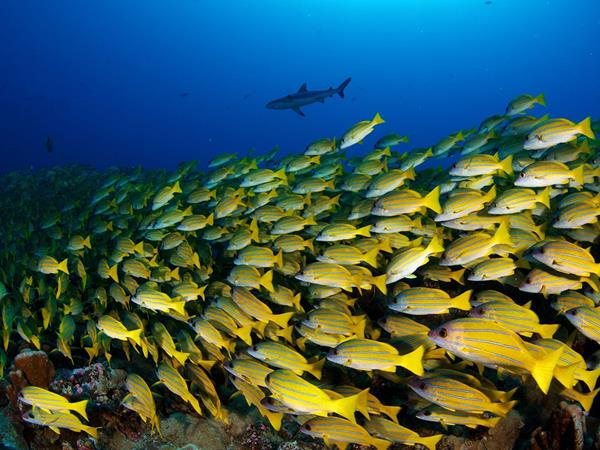 For
people that really want a more dedicated dive experience from a land
based resort, this third part of the trip will start the day after
the cruise ends and will depart Papeete on June 9, 2019. Again, it’s
a long flight from LAX so while you could do an overnight flight and
then join the group at the Papeete airport there is a long list of
things that could go wrong with that approach. With that in mind,
the Active Divers trip package will include a night at the
Intercontinental Hotel in Papeete on June 8, 2019. After a restful
night we will transfer to the airport in the morning for a flight to
Bora Bora for 4 nights at the Maitai Polynesian Resort (breakfast
included) for three days of diving. On June 13 we depart Bora Bora
and fly to Rangiroa (not shown on the map but would be in the upper
right hand corner) for 4 nights at the Maitai Rangiroa Resort
(breakfast and dinner Included) for three more days of diving.
For
people that really want a more dedicated dive experience from a land
based resort, this third part of the trip will start the day after
the cruise ends and will depart Papeete on June 9, 2019. Again, it’s
a long flight from LAX so while you could do an overnight flight and
then join the group at the Papeete airport there is a long list of
things that could go wrong with that approach. With that in mind,
the Active Divers trip package will include a night at the
Intercontinental Hotel in Papeete on June 8, 2019. After a restful
night we will transfer to the airport in the morning for a flight to
Bora Bora for 4 nights at the Maitai Polynesian Resort (breakfast
included) for three days of diving. On June 13 we depart Bora Bora
and fly to Rangiroa (not shown on the map but would be in the upper
right hand corner) for 4 nights at the Maitai Rangiroa Resort
(breakfast and dinner Included) for three more days of diving.